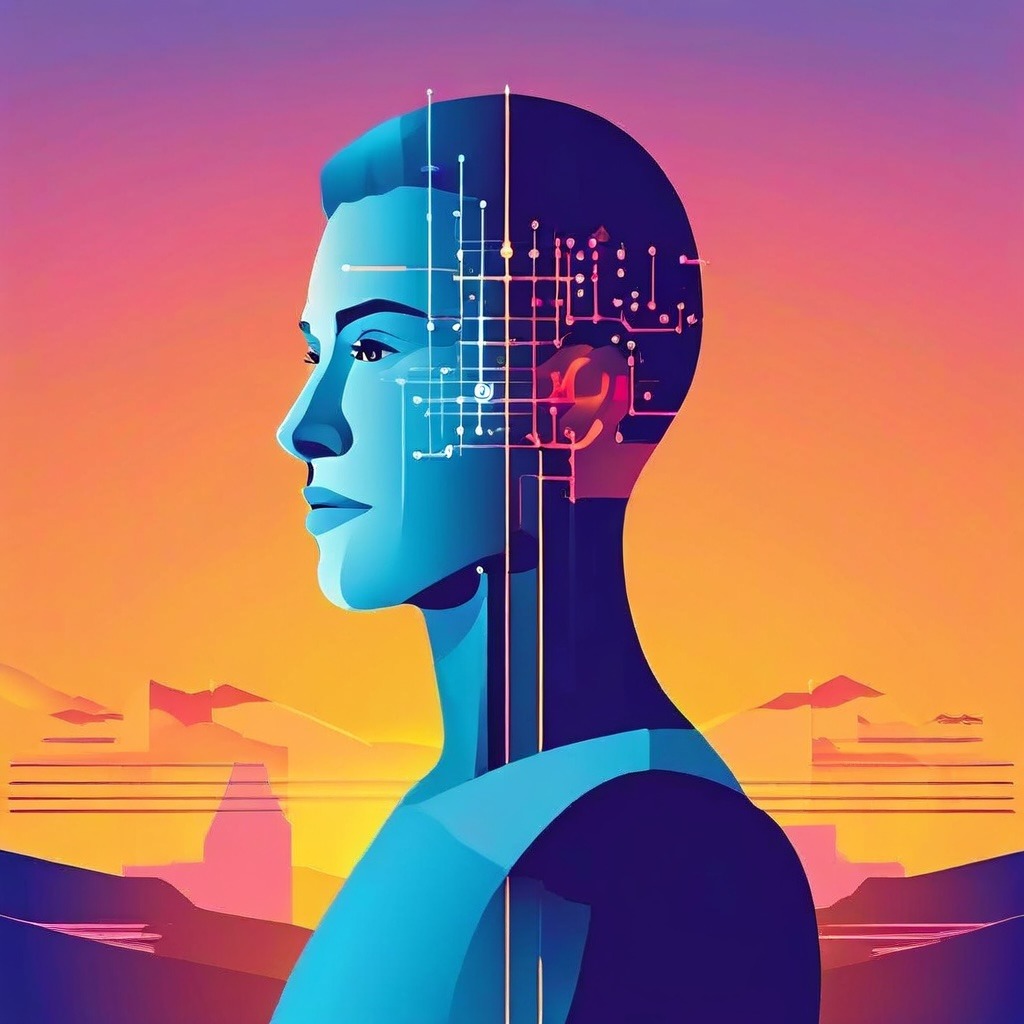In the ever-evolving digital landscape, the healthcare industry stands as a prime target for cyber threats. With an abundance of sensitive data, including medical records, financial information, and personal details, the consequences of a successful cyber attack can be devastating. As the frequency and sophistication of these attacks continue to escalate, traditional cybersecurity measures are increasingly challenged to keep pace. This is where Artificial Intelligence (AI) emerges as a game-changer, offering a proactive and adaptive approach to safeguarding the healthcare sector’s digital frontiers.
The Evolving Cybersecurity Landscape in Healthcare
The healthcare industry is a lucrative target for cybercriminals due to the immense value of the data it holds. Medical records can fetch substantial sums on the dark web, enabling identity theft, insurance fraud, and other nefarious activities. Moreover, the disruption caused by successful cyber attacks can have life-threatening consequences, as critical systems and devices may be compromised, impacting patient care and hospital operations.
The challenges faced by healthcare organizations in combating cyber threats are multifaceted. Legacy systems, limited budgets, and a shortage of cybersecurity professionals exacerbate the problem. Additionally, the widespread adoption of connected medical devices and the Internet of Things (IoT) has expanded the attack surface, creating new vulnerabilities to exploit.
Healthcare organizations face a myriad of cyber risks. Some of the most prominent threats include:
- Ransomware Attacks: These crippling attacks encrypt vital systems, rendering them inaccessible until the ransom is paid. They can bring hospitals to a grinding halt, endangering patient care.
- Data Breaches: Hackers target sensitive patient information for sale on the dark web or to exploit for financial gain. Such breaches severely damage reputation and undermine patient trust.
- Phishing Attacks: Employees are often tricked into clicking on malicious links or opening infected attachments through sophisticated phishing campaigns, compromising critical networks.
- Insider Threats: Whether intentional or accidental, employees can expose sensitive data due to inadequate security awareness, lack of access controls, or even malicious intent.
- Vulnerabilities in Connected Devices: The proliferation of medical devices connected to the internet (Internet of Things) expands the attack surface for hackers.
Why Traditional Cybersecurity Isn’t Enough
In the face of these persistent threats, traditional cybersecurity measures relying on firewall protection and signature-based antivirus software become outdated. These solutions find it difficult to keep up with:
- Volume of Data: The amount of security-related data generated in healthcare environments is overwhelming for human teams to analyze manually.
- Speed of Attacks: Cybercriminals are highly automated, operating at a pace that makes rapid human response nearly impossible.
- Sophistication of Threats: New attack techniques and zero-day vulnerabilities (previously unknown flaws) constantly emerge, rendering conventional defenses ineffective.
AI: The Formidable Ally in Cybersecurity Defense
AI has emerged as a powerful ally in the battle against cyber threats, offering a range of capabilities that can bolster the healthcare industry’s cybersecurity defenses. By harnessing the power of machine learning algorithms, AI systems can analyze vast amounts of data, identify patterns, and detect anomalies that may indicate potential attacks.
AI brings a paradigm shift to cybersecurity. Machine learning and deep learning algorithms offer capabilities that far surpass traditional solutions. Here’s how AI can act as a digital guardian of healthcare data:
- Advanced Threat Detection: One of the most significant advantages of AI in healthcare cybersecurity is its ability to perform predictive analytics. By analyzing historical data, network traffic patterns, and user behavior, AI systems can identify potential threats before they materialize. This proactive approach enables healthcare organizations to take preventive measures, reducing the risk of successful attacks and minimizing the potential impact. AI algorithms can sift through vast amounts of data, identifying subtle deviations from normal patterns that may indicate malicious activity. This includes detecting unusual login attempts, suspicious file transfers, or network traffic anomalies that could signal the presence of malware or unauthorized access attempts, and the early signs of a breach that may go unnoticed by humans.
- Adaptive Learning and Response: AI models are not static. They constantly evolve and adapt, learning from past incidents and incorporating new threat intelligence. This means they improve over time, remaining effective against rapidly changing tactics.
- Proactive Risk Assessment: AI can analyze an organization’s network, devices, and applications to identify potential vulnerabilities and weaknesses. This enables proactive risk mitigation and hardening of systems before hackers exploit them.
- Incident Response Automation: In the event of a cybersecurity threat, time is of the essence. AI can automate certain responses to threats, such as isolating affected systems, thus preventing the spread of malware or the compromise of more data. This rapid response can be crucial in limiting the impact of a cyberattack. AI can automate certain responses to cyber threats, and alert relevant personnel, minimizing the impact of attacks.
- Threat Intelligence Augmentation: AI can help cybersecurity teams stay ahead of the curve by automatically gathering threat intelligence, analyzing emerging attack methods, and sharing insights across the healthcare industry.
- Enhancing Human Capabilities: AI does not replace human cybersecurity professionals but rather augments their capabilities. By handling routine monitoring and analysis tasks, AI allows human experts to focus on more complex and strategic aspects of cybersecurity, such as policy development and incident response planning.
Real-World Examples of AI in Healthcare Cybersecurity
- Detecting Unusual Network Activity: An AI system may continuously monitor network traffic patterns. Any deviation from normal behavior, like an unexpected spike in data transfer to an unknown external server, could signal a breach in progress.
- Identifying Phishing Attempts: AI can analyze emails for indicators of phishing, such as suspicious sender domains, mismatched links, and urgent language prompting immediate action. The system can block or quarantine potentially malicious emails.
- Ransomware Defense: AI can detect behavioral patterns associated with ransomware attacks, such as rapid file encryption activity or attempts to disable backup systems. Such early detection can prevent widespread damage.
- Securing Medical Devices: AI can monitor connected医疗设备 for unusual activity, potential vulnerabilities, or unauthorized access attempts, ensuring the security of sensitive medical data.
- Vulnerability Prioritization: AI-powered risk assessment tools can help organizations identify the most critical vulnerabilities, prioritize patching efforts, and efficiently allocate cybersecurity resources.
- The Mayo Clinic has implemented AI in its cybersecurity strategy, using machine learning algorithms to monitor and analyze network traffic. This approach has enabled the clinic to rapidly identify and respond to potential threats, significantly improving its cybersecurity posture.
- IBM Watson Health has been at the forefront of integrating AI into healthcare, including cybersecurity. Its cognitive computing capabilities enable it to process vast amounts of unstructured data, identify patterns, and predict potential threats.
Benefits of AI-Powered Cybersecurity for Healthcare
Implementing robust AI-driven cybersecurity measures offers several compelling advantages for healthcare organizations:
- Enhanced Patient Data Protection: The primary benefit is protecting the sensitive information entrusted to healthcare organizations. Robust AI defense mechanisms minimize the risk of breaches, preserving patient privacy.
- Reduced Financial Losses: Data breaches and ransomware attacks can lead to significant financial costs stemming from regulatory fines, remediation efforts, and lost revenue. AI helps prevent those attacks, safeguarding an organization’s finances.
- Improved Operational Efficiency: AI-powered tools can automate many security tasks, freeing human teams to focus on strategic initiatives and complex threat analysis.
- Strengthened Reputation and Patient Trust: Proactive defense against cyber threats strengthens a healthcare organization’s reputation, fostering trust with patients and the community. Patients are more likely to seek care when they believe their data is secure.
- Compliance Enablement: Healthcare organizations must comply with strict regulations like HIPAA. AI can help ensure compliance, monitor data handling practices, and generate necessary reports.
Challenges and Considerations when Implementing AI Cybersecurity
As with any technology, AI for cybersecurity has potential challenges worth considering:
- Data Quality: AI models are only as effective as the data they are trained on. Ensuring high-quality, diverse, and up-to-date training data is crucial for accuracy and relevance.
- Model Interpretability: More complex AI models can become a ‘black box’, where understanding the logic behind their decisions becomes difficult. This can hinder collaboration between AI-systems and humans.
- Cost and Expertise: Building and deploying effective AI cybersecurity solutions requires specialized expertise and significant investment, something not all healthcare organizations may initially have.
- Alert Fatigue: AI systems can generate a large number of alerts, some of which may be false positives. Striking the right balance between sensitivity and manageable alerts is essential to avoid overwhelming security teams.
- Evolving Threats: Cybercriminals continuously adapt their techniques. It requires ongoing vigilance and a commitment to updating AI models to maintain effectiveness.
Best Practices for Healthcare Organizations
To get started in leveraging AI for cybersecurity, here are some key recommendations:
- Conduct a Thorough Risk Assessment: Identify the most critical assets, vulnerabilities, and potential threats your organization faces. This helps tailor an AI-powered security approach.
- Partner with Cybersecurity Experts: Collaborate with providers who have proven experience in healthcare cybersecurity and understand the unique challenges and regulations of the sector.
- Focus on Training and Awareness: Ensure employees are well-trained on security best practices and understand how to recognize potential cyber threats. Robust human awareness complements AI tools.
- Emphasize Transparency and Accountability: Clear procedures for incident reporting, response, and communication foster a strong cyber-aware culture within the organization.
- Stay Informed: Subscribe to threat intelligence sources, follow industry trends, and regularly update your AI models and defense strategies.
The Future of AI in Healthcare Cybersecurity
AI is set to become even more integrated into healthcare cybersecurity. As algorithms become more sophisticated, we can expect:
- Increased automation: AI will handle even more tasks autonomously, from threat detection to incident response and routine security functions.
- Integration with connected devices: AI will play a key role in securing the expanding network of IoT medical devices, ensuring data integrity and patient safety.
- AI-powered threat hunting: Rather than just reacting to threats, AI will help predict likely attackers and adapt defenses proactively.
- Collaborative Intelligence: AI will share information and countermeasures across the healthcare sector, fostering collaborative defense against cyber-attacks.
To Summarize
In the rapidly evolving landscape of healthcare cybersecurity, AI stands as a powerful ally, offering proactive threat detection, automated response capabilities, continuous monitoring, and augmented human expertise. By harnessing the power of machine learning and predictive analytics, healthcare organizations can fortify their defenses against ever-increasing cyber threats, safeguarding sensitive data and ensuring the continuity of critical operations.
However, the adoption of AI in healthcare cybersecurity must be accompanied by robust governance frameworks, ethical considerations, and a commitment to continuous adaptation and improvement. By striking the right balance between leveraging AI’s capabilities and addressing potential challenges, the healthcare industry can leverage this transformative technology to enhance patient safety, protect sensitive information, and maintain the integrity of vital systems and processes.
AI is a transformative technology for cybersecurity, and its impact on healthcare will only grow. By understanding the advantages, overcoming challenges, and implementing sound practices, healthcare organizations can leverage AI to safeguard sensitive patient data, ensuring patient trust in an increasingly digital world.
HERE is an interesting article from CISA about Healthcare and public Health Cyber secrurity
More from The Missing Prompt





